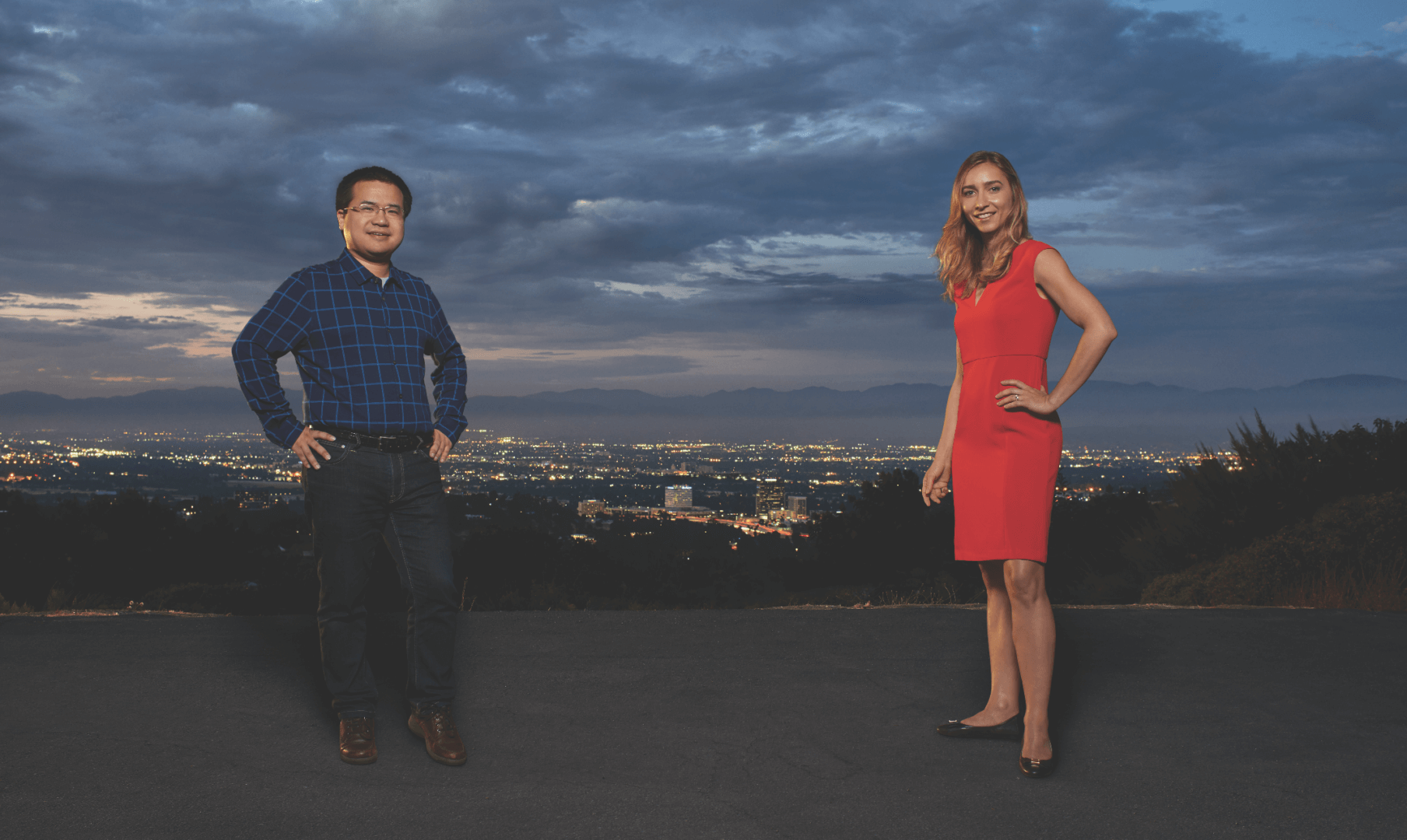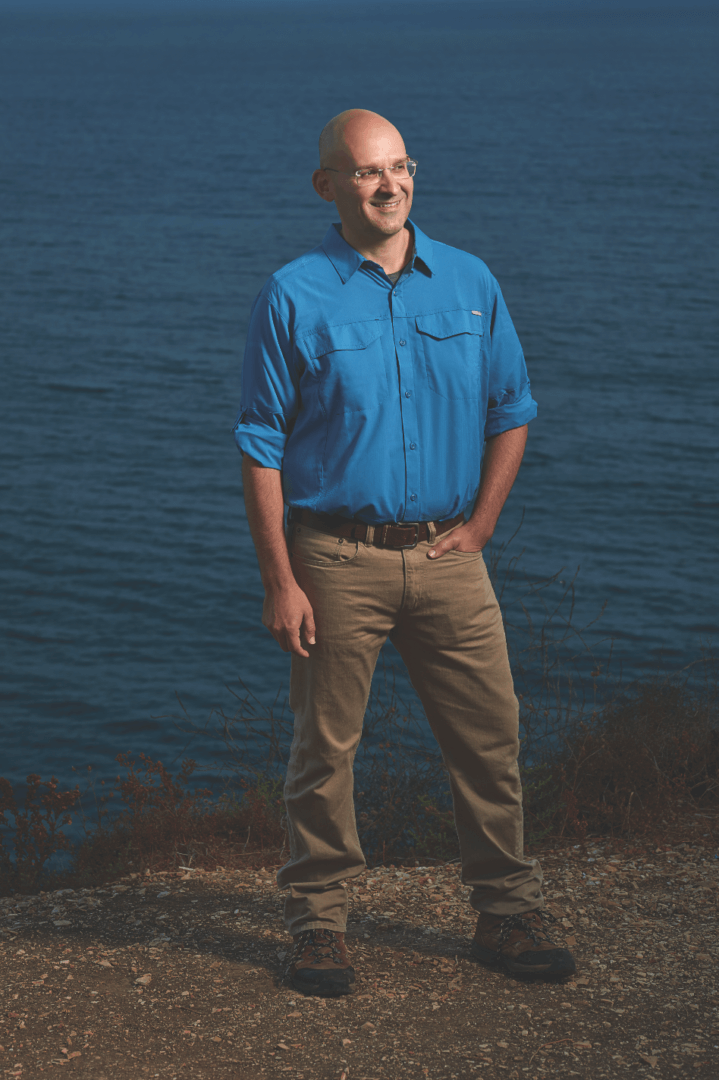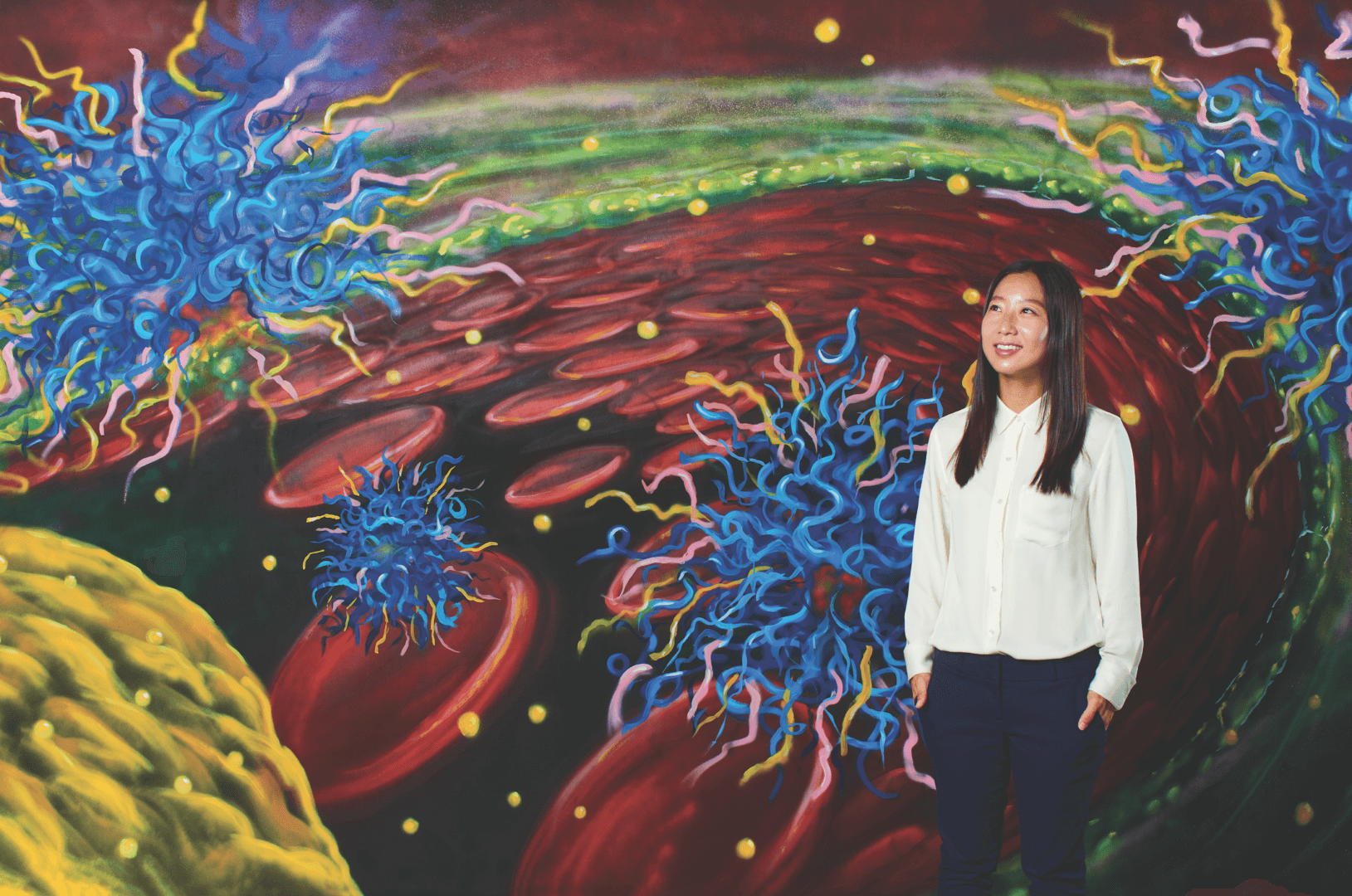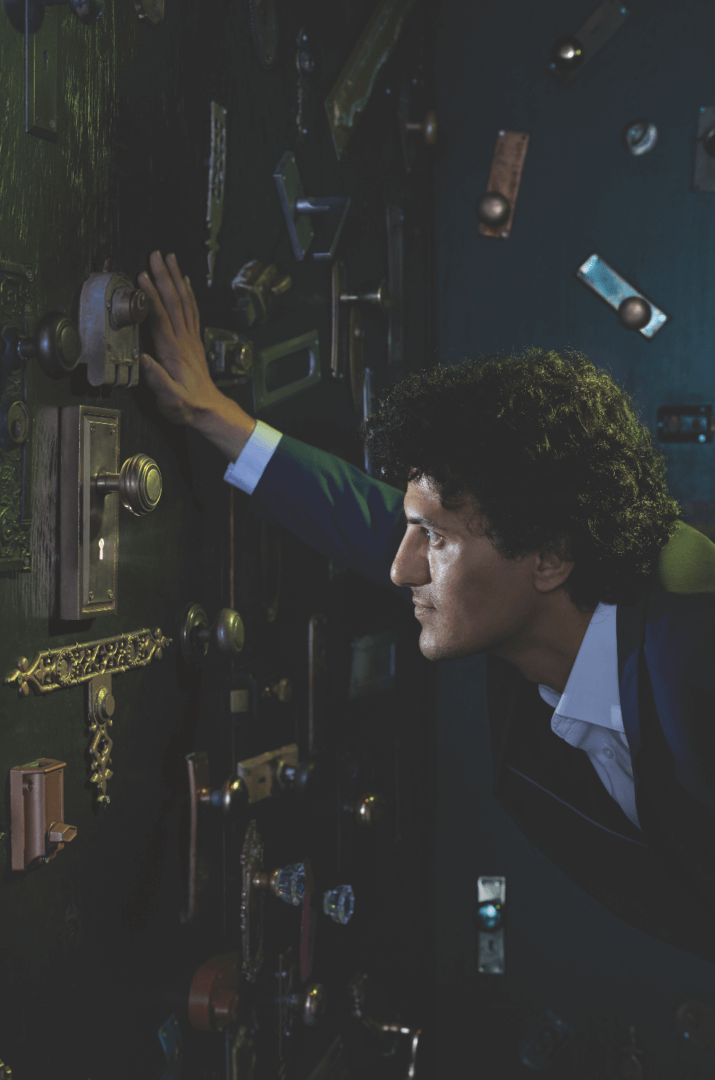“City of Stars”
Han Wang: Seeing smiles in the dark
By Ben Paul
Sometimes approaching a problem from a new angle leads to surprising results. Such is the case with the work of Han Wang, a professor in the Ming Hsieh Department of Electrical Engineering.
Wang works with black phosphorous, a material made by putting the more common red phosphorous (the red powder on the top of matches) under extreme pressure. Black phosphorous can be laid out in thin film sheets with a wave-shaped atomic structure. When implanted into infra-red cameras, these sheets sense not just light but also its polarization — the plane in which the light vibration occurs.
Sensing light polarization can potentially allow Wang’s upgraded detectors to “see” objects in three dimensions, and in the dark. The technology could give security agencies a new tool in the fight against crime and terrorism.
Instead of those reddish blobs that represent people in existing infra-red cameras, we might one day see detailed human features and facial expressions — like a smile in the dark.
Phebe Vayanos: Optimization and analytics for social good
By Breanne Grady
How can we help save the lives of patients waiting for an organ transplant, thwart terrorist attacks, preserve biodiversity, prevent substance abuse among homeless youth, and determine the optimal timing for breast cancer screenings? “I am convinced that data science and optimization will play a key role in answering these questions” says Phebe Vayanos, assistant professor of Industrial and Systems Engineering at USC Viterbi and associate director of the Center for Artificial Intelligence in Society. “What excites me most in my work is that it relies on strong mathematical foundations to help address important societal problems” she says. Leveraging historical data from the U.S. Kidney Allocation System, for example, Vayanos helps patients suffering from end-stage renal disease decide whether to accept or reject an organ for transplantation. She hopes her research will help patients make better decisions that will improve their quality of life and maximize their chances of survival.
Alice Parker: Worming her way into the brain
By Ben Paul
Caenorhabditis elegans is a roundworm so unassuming it only has a Latin name. It lacks
a respiratory system and a circulatory system. Instead of a brain, 302 neurons control its movement. But its simplicity is exactly what makes it so useful to Alice Parker, USC Viterbi Dean’s Professor of Electrical Engineering.
Parker, along with a team of undergrads, built an electronic neural network that mimics part
of the worm’s neurons that control its undulating movement. Their simulation can control an artificial worm in the same way a real worm’s “brain” allows it to move. One of Parker’s students presented their research at an international conference in Alaska.
By converting a simple biological neural network into an artificial brain, more advanced neural networks could be converted into artificial form too. These artificial networks could be put on chips and installed in machines like autonomous cars, potentially improving AI significantly. All thanks to one simple, beautiful little worm.
Patrick Lynett: CSI of the oceans
By Ashleen Knutsen
Patrick Lynett, associate professor in the Sonny Astani Department of Civil and Environmental Engineering at USC Viterbi, deals in extremes. As a member of the USC Tsunami Research Center, his research focuses on gaining a better understanding of damaging coastal hazards like hurricanes, typhoons and tsunamis.
Using a combination of field work, physical experiments and computer modeling, Lynett breaks down these chaotic events into coherent pieces, and uses what he learns to develop tools to protect coastal communities and harbors.
“In the past five to 10 years, I’ve spent a lot of my time working not with researchers, but with engineers and planners and those in the hazard emergency response and mitigation community on ways to bring these models into their planning,” Lynett said. “I would consider that to be at least one of my major accomplishments: being able to bring these next-generation research tools into application.”
Eun Ji Chung: The Nanoparticle Maker
By Breanne Grady
Eun Ji Chung uses molecular engineering to address limitations in the diagnostics and treatment of atherosclerosis, the leading cause of sudden death in the United States and around the world. Atherosclerosis is a condition in which the artery walls thicken through the buildup of plaques comprised of white blood cells called monocytes. Some of these plaques may be “silent” and can rupture without warning into full blockages of blood vessels, causing heart attacks and strokes. To address these ticking time bombs, Chung engineers micelles, or self-assembling nanoparticles, with special peptide sequences that bind to the surface of the plaques. She then customizes the nanoparticles by tacking on various chemical entities such as therapeutics. The aim: to stabilize the rogue plaques and inhibit the progression of atherosclerosis. Chung also adds magnetic resonance imaging (MRI) agents to the nanoparticles, enabling better monitoring of the condition.
Mitul Luhar: The turbulent man
By Daniel Druhora
Mitul Luhar, assistant professor of aerospace and mechanical engineering, dives into the Pacific waves to dance with his favorite subject: turbulence.
One of the key research thrusts in Mitul Luhar’s lab is the study of wall-bounded turbulent flows — the flow of air, water or any other fluid close to a surface. Think flows inside pipes and channels or over airplane fuselages, ship hulls, riverbeds and seabeds. Turbulence can be detrimental, increasing the risk of friction and erosion. By combining careful laboratory experiments, theoretical modeling and computer simulations, Luhar, assistant professor in the USC Viterbi Department of Aerospace and Mechanical Engineering, seeks to improve our understanding of such flows and develop new ways to control them.
His work addresses several important questions in environmental science and engineering design: How does the rough and porous nature of riverbeds and seabeds effect erosion? Are there any aero- or hydrodynamic advantages to having feathers or fur? Does sharkskin suppress turbulence? Recently Luhar evaluated whether sea grasses might substantially dampen waves in coastal zones, possibly by as much as 60 percent. Ongoing modeling efforts suggest that appropriately designed porous surfaces could reduce friction in pipes and channels by as much as 20 percent, predictions that will soon be tested in Luhar’s lab. By finding answers, perhaps someday we could design artificial surfaces that can bend turbulence to our desires.
Muhammad Naveed: Cyber locksmith
By Ben Paul
Sometimes you have to break something before you can fix it. Such is the case with encrypted databases. Used by corporations and institutions, they store the personal information of hundreds of millions of people. Today, property-preserving encrypted databases are the state-of-the-art solution to protecting information.
Muhammad Naveed, assistant professor of computer science at USC Viterbi, and his colleagues use algorithms that attack these databases — for the common good. They successfully decrypted 99 percent of the first names and 97 percent of the last names in lists secured with encrypted databases. After Naveed’s algorithms took them apart, the security world realized how unprotected we are.
Surprisingly, not all the algorithms Naveed uses are state-of-the-art. One of them was written 1,200 years ago by an Arab cryptologist named Al-Kindi. This 9th-century algorithm was originally used to decipher the texts of unknown languages in a search for knowledge. More than a thousand years later, Naveed has given it new life in the fight against cybercrime and cyberterrorism.









